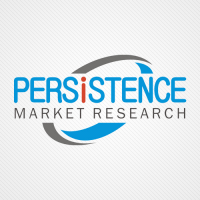Veterinary Molecular Diagnostics Market to Witness a Pronounce Growth During 2016-2024: Persistence Market Research
The Veterinary Molecular Diagnostics Market report provides in-depth analysis of parent market trends, macro-economic indicators and governing factors along with market attractiveness as per segments. The report also maps the qualitative impact of various market factors on market segments and geographies.

New York, NY -- (SBWire) -- 03/17/2017 --Veterinary diseases are on the rise worldwide and so the concerns about the animal health, as they are the vital source of numerous useful by-products such as milk, fur, oil, and meat. Nowadays, the market related to animals is somehow is gaining popularity, which is further making the market scenario for the molecular diagnostic market. Veterinarians around the world are revealing new facts regarding various diseases related to different species of animals, which in turn is expected to fuel the veterinary molecular diagnostic market in the near future. The molecular diagnostic systems are complex and difficult to manufacture.
Rising prevalence of various animal diseases globally is expected to favor the veterinary molecular diagnostics market over the forecast period. The rise in spending on pets is one of the reasons that can favor the veterinary molecular diagnostic market. There has been a rise in increasing foodborne diseases and is expected to be one of the most crucial reasons for the growth of veterinary molecular diagnostic market. Furthermore, global animal production has reduced by 15%–20% a year, mainly due to rising incidence of foodborne zoonotic diseases. With growing awareness about zoonotic diseases such as brucellosis, bird flu, and swine flu, farm owners are increasingly inclined towards the proper care of livestock through correct and specific diagnosis. According to the European Food Safety Authority (EFSA), around 3,20,000 cases of foodborne and zoonotic diseases are reported every year. Campylobacteriosis affected around 2,20,209 people in the EU in 2012, due to consumption of infected broiler meat. However, the number of salmonellosis cases in humans decreased by 5.4% in the EU between 2010 and 2012. This was primarily due to increase animal healthcare initiatives and disease diagnosis rate.
Rising affordability for access to essential healthcare services is contributing largely to disease testing and identification at early stages. Furthermore, an increase in the influence of western culture in developing countries such as China and India has resulted in an increase in adoption of pets in the region. This, in turn, is driving the growth of the animal healthcare market. Over the years, pet-ownership has become a status symbol in developing countries. People also adopt dogs and cats for therapeutic and psychological benefits. Also, pet ownership in the U.S. has more than doubled from 67 million households in the 1970s to 164 million households in 2012. According to the American Pet Products Association (APPA), there were 83.3 million pet dogs in the country in 2012, with 47% of the households in the U.S. having at least one dog. There were 96 million owned cats in the U.S. in 2012, with 46% of the total households having at least one cat. According to The Week magazine, total expenditure on companion animals in the U.S., including animal food, healthcare, and other accessories, increased to US$ 53 Bn in 2012 from US$ 43 Bn in 2008.
There are few impediments in the veterinary molecular diagnostic market, which can slow down the growth pace of the market. There have been few pitfalls in understanding antigen-immunogenic structures, which lead to a deficiency in fitting, proper epidemiological models. This creates a shortfall in the logical representation of the epidemiology of disease transmission and its associated processes. As per marketplace discussions, veterinary research diagnostic centers need to maintain closer collaborations with animal healthcare providers to gain deeper insights into antigen/immunogenic structures.
On the basis of region presence, veterinary molecular diagnostics market is segmented into five key regions: North America, Latin America, Europe, Asia-Pacific, and Middle East & Africa. Presently, North America dominates the global market for Veterinary Molecular Diagnostics due to high diagnose rate and a large number of facilities for research and development. However, growth in Middle East and African region is significant growth in terms of CAGR over the forecast period due to rise in a number of incidence and favorable healthcare facilities. The U.S. Veterinary Molecular Diagnostics market is expected to dominate in terms of market share with significant share among all the regions.
A Sample of this Report is Available Upon Request @ http://www.persistencemarketresearch.com/samples/12874
Some player exists in the market are IDEXX Laboratories, Inc., VCA, Inc., ABAXIS, Inc., Heska Corporation, Zoetis, Inc., Neogen Corporation, Thermo Fisher Scientific, Inc., ID.Vet, Virbac, GE Healthcare, AGFA Healthcare, and Veterinary Molecular Diagnostics, Inc.
To View TOC of this Report is Available Upon Request @ http://www.persistencemarketresearch.com/toc/12874
Media Relations Contact
Rahul Singh
Marketing Manager
Persistence Market Research Pvt. Ltd
800-961-0353
http://www.persistencemarketresearch.com/market-research/veterinary-molecular-diagnostics-market.asp
View this press release online at: http://rwire.com/783550